Juniper Duck With Corn And Sage Relish Recipe
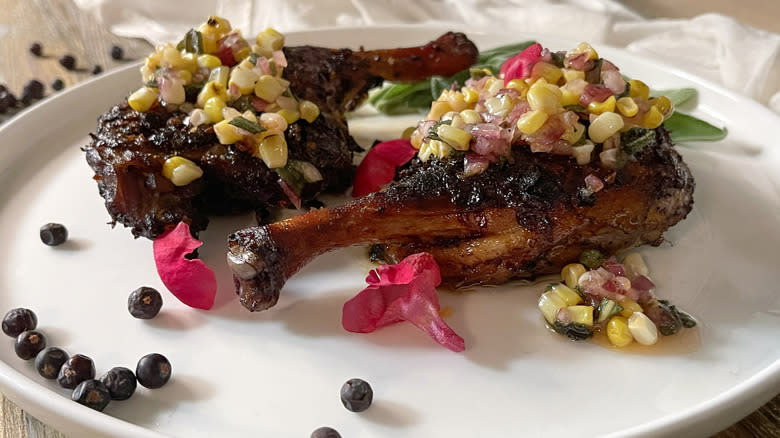
If chicken is the go-to poultry served in your home (with a seasonal turkey feature), it's time to expand beyond the usual. Switch it up by cooking duck, an excellent alternative that's packed with flavor and a succulent texture while sticking to the breast, leg, and wing combo you're already familiar with. Tasting Table recipe developer Kara Barrett shares this juniper duck with corn and sage relish, highlighting duck legs with a savory rub and tangy garnish.
Barrett explains how she chose the various components, saying, "The piney, roasted juniper and the molasses flavor from the dark brown sugar need a counterbalance. The richness of the duck is brightened by the sharp flavor of fresh corn and tart vinegar in the relish. Sage adds an herby element." The contrasting ingredients bring everything together in a cohesive bite that sets your palate up for a burst of flavors. There's already plenty going on here, so pair the duck with a leafy green salad, roasted potatoes, or a mash for a simple side dish to round out your meal.
Read more: 11 Cleaning Tips For Keeping Your Oven Spotless
Gather The Ingredients For Juniper Duck With Corn And Sage Relish
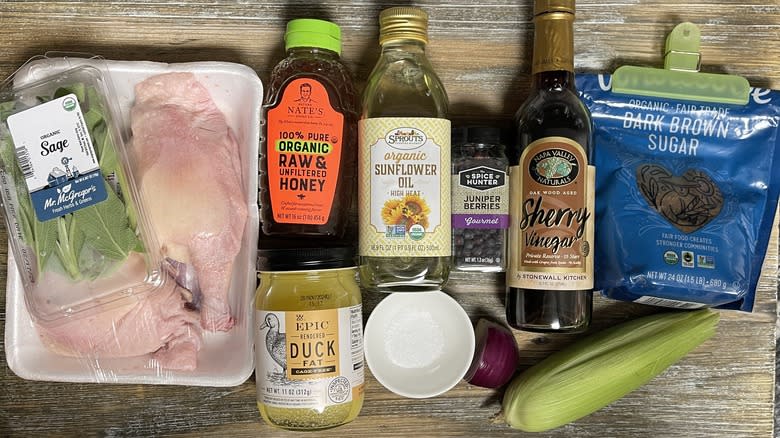
For this dish, you'll need duck thighs with the fat trimmed. Thighs are not interchangeable with breasts, as Barrett notes, "Duck breast is generally cooked medium rare whereas the thighs have connective tissue that benefits from a slow roast." Next, get juniper berries, which offer a pine and citrus aroma, as well as kosher salt and dark brown sugar.
For the relish, get an ear of corn, a small red onion (finely chopped), sunflower oil, sherry vinegar, honey, chopped fresh sage (and more sprigs for garnish), and duck fat. If corn is out of season, use frozen or canned as a substitute, though Barrett recommends looking for roasted corn, if possible.
Step 1: Prep The Duck Thighs
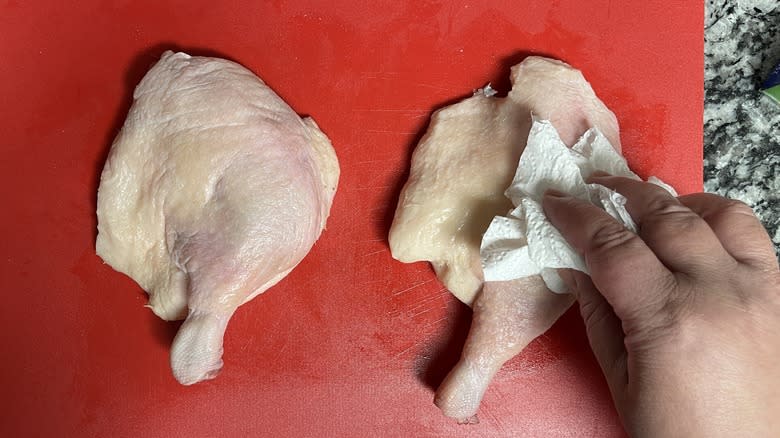
Pat the duck dry with a paper towel and score the skin side of the thighs with a knife or toothpick. Set aside.
Step 2: Toast The Juniper
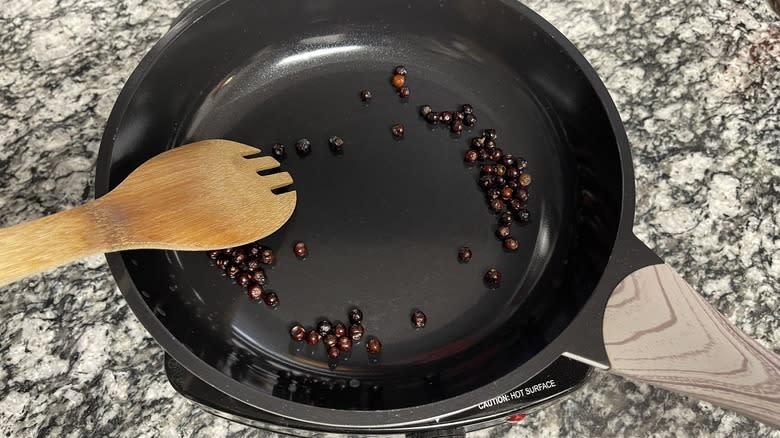
Toast the juniper berries in a pan over medium-high heat for a few minutes, until shiny and fragrant.
Step 3: Crush The Juniper
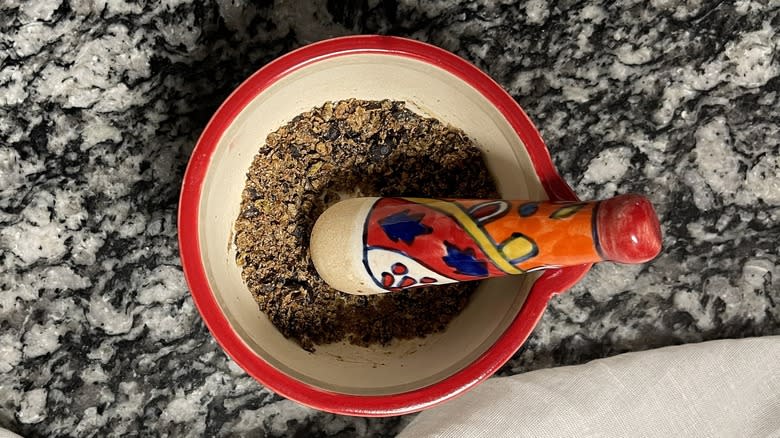
Using a mortar and pestle, crush together juniper berries, ¾ teaspoon kosher salt, and dark brown sugar.
Step 4: Season The Duck Thighs
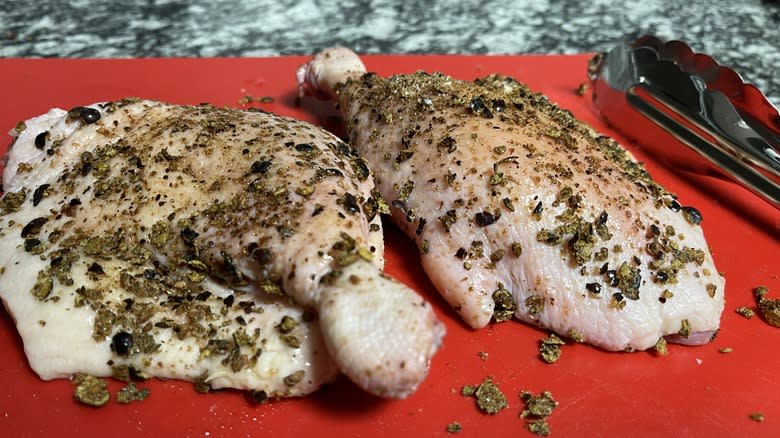
Pat the duck thighs dry with a paper towel, then coat them evenly with the juniper berry mixture. Set aside for 30 minutes to allow the flavors to infuse.
Step 5: Cook The Corn
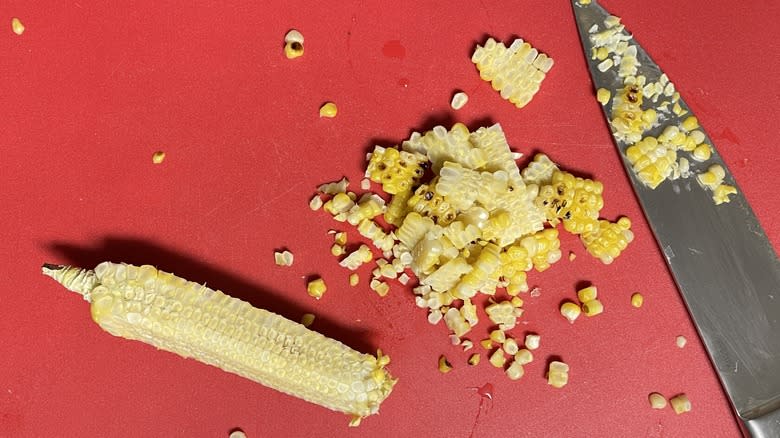
In a hot skillet, sear corn on all sides, then remove the kernels.
Step 6: Mix The Vegetables With Condiments
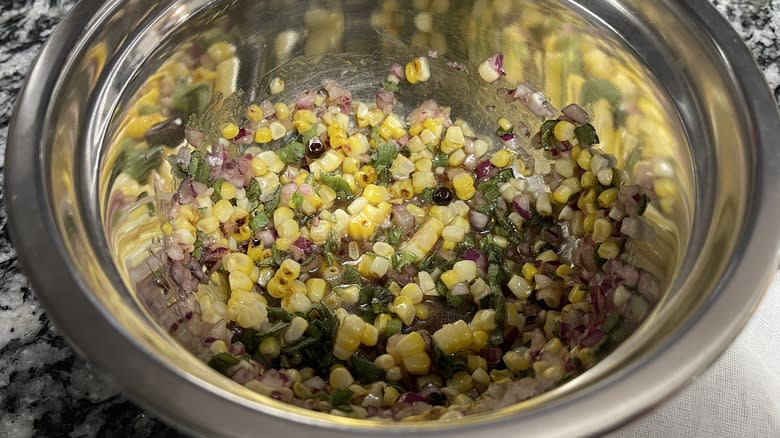
Combine the onion, corn, ¼ teaspoon kosher salt, sunflower oil, sherry vinegar, honey, and chopped sage. Set aside.
Step 7: Preheat The Oven

Preheat the oven to 275 F.
Step 8: Place The Duck In A Pan
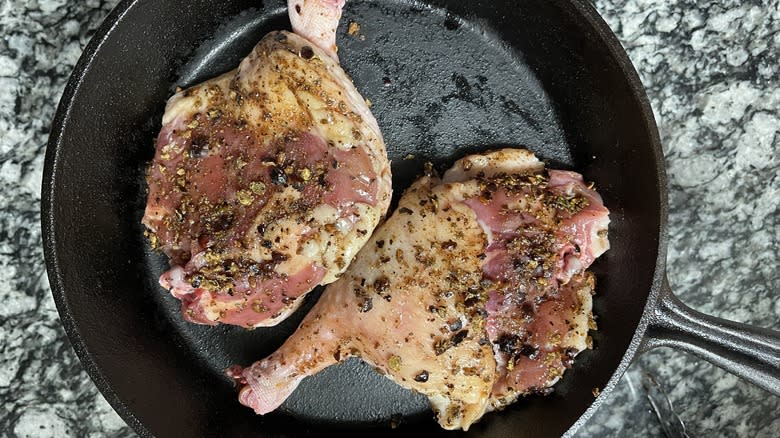
Add the duck legs skin-side down to a cold cast iron skillet and bring it up to medium heat.
Step 9: Cook The Duck
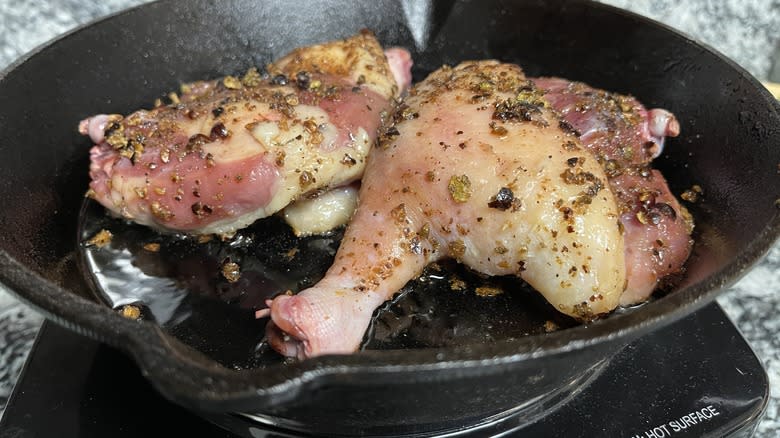
Cook the duck thighs until the skin crisps and fat renders, about 15–20 minutes.
Step 10: Add Duck Fat
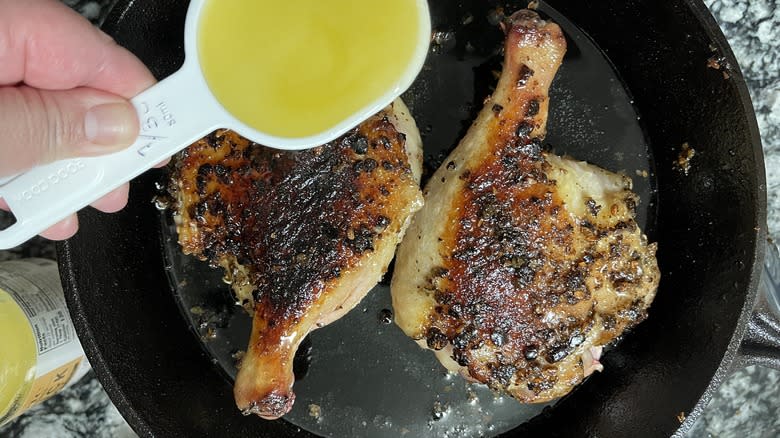
Add ⅔ cup additional duck fat to the skillet, or as much as is needed to bring it at least ¼ of the way up the legs. More fat will render as it cooks.
Step 11: Bake The Duck
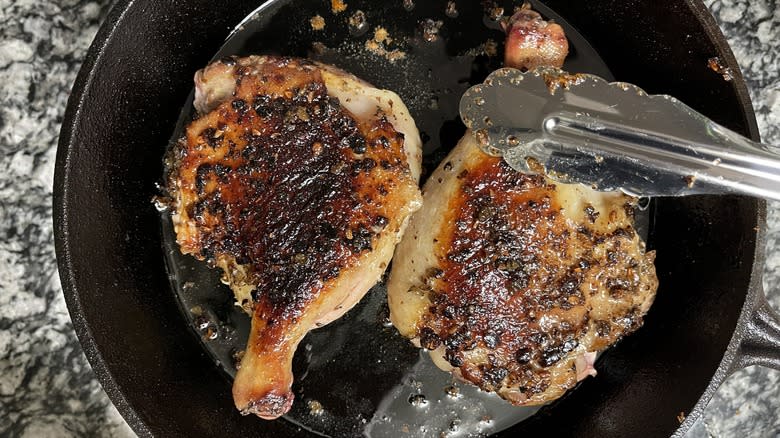
Turn the duck over and cook it in the oven for approximately 2 hours, or until the meat is tender. If the skin is browning too much, cover with a lid or foil.
Step 12: Baste The Duck
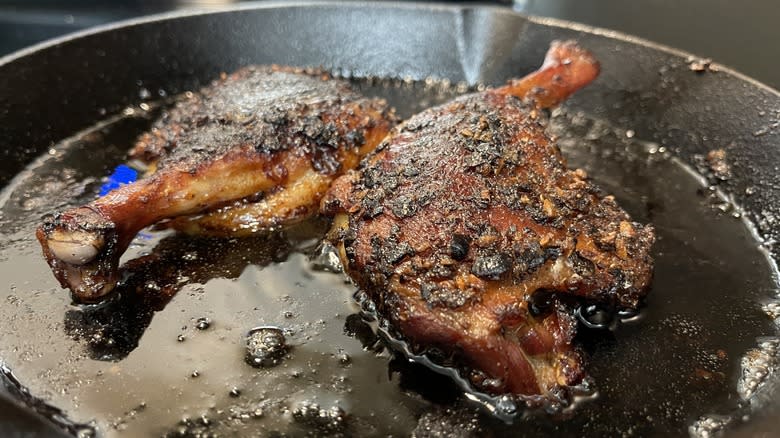
Baste halfway through cooking.
Step 13: Let The Duck Rest
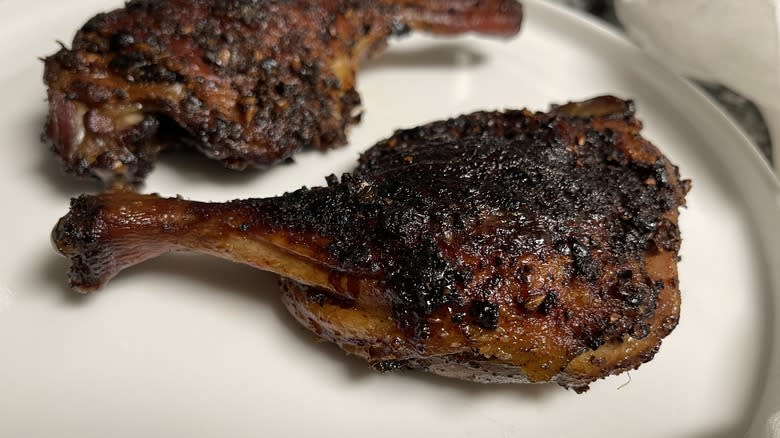
Remove onto a plate or paper towels and allow the duck to rest for 15 minutes.
Step 14: Serve With Relish
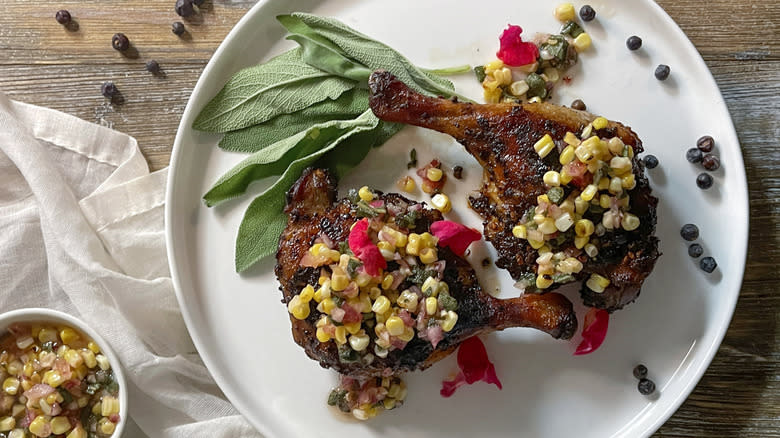
Serve the thighs while warm, drizzled with corn relish.
Is There An Alternative Method For Cooking Duck That Doesn't Require As Much Fat?
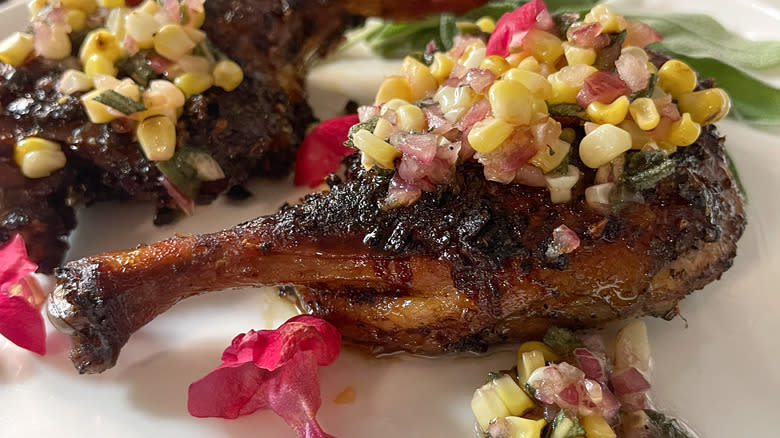
This recipe uses a hefty amount of fat to achieve a juicy consistency, which is similar to the technique used for making duck confit. Duck fat is highly revered among chefs for its savory flavor and optimal cooking properties, but if you're looking to keep your fat intake low, there are alternative methods to prepare this dish. Barrett says, "Instead of adding more duck fat, you can opt to drain some of the excess fat to store and slowly braise the duck in stock instead."
Chicken stock will more closely mimic the poultry flavor, but vegetable stock is a suitable option, too. While the meat will properly cook and achieve a great flavor and texture, Barrett points out that using duck fat in the preparation will enhance the dish's richness. As such, you might want to reduce the vinegar in the relish to adjust for this difference.
What Elements Of This Juniper Duck Dish Are Influenced By Indigenous Cuisine?
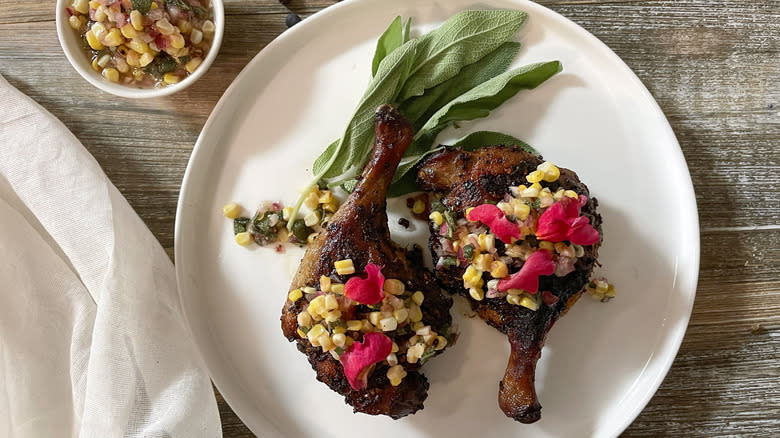
This recipe has various influences, including from Indigenous cultures. Whether it's using a protein you're less accustomed to or vegetables and herbs that are native to a particular environment, there are plenty of ways to experiment by infusing elements from other cultures into a recipe. As Barrett explains, "Native American tribes often ate wild game like duck in precolonial times and would have seasoned it with foraged foods like juniper berries (which are actually conifers) and herbs like sage." These ingredients provided her with a foundation for the seasoning flavor profile.
As for the relish, she notes, "Corn was a staple food for many tribes." As a member of the Kiowa tribe in Oklahoma, Barrett explains, "I try to incorporate ingredients that are true to my ancestors' culinary traditions when possible while also introducing my own take on the dish." This combination offers a fresh take on traditional flavors and ingredients that can be transferred to other dishes.
Juniper Duck With Corn And Sage Relish Recipe
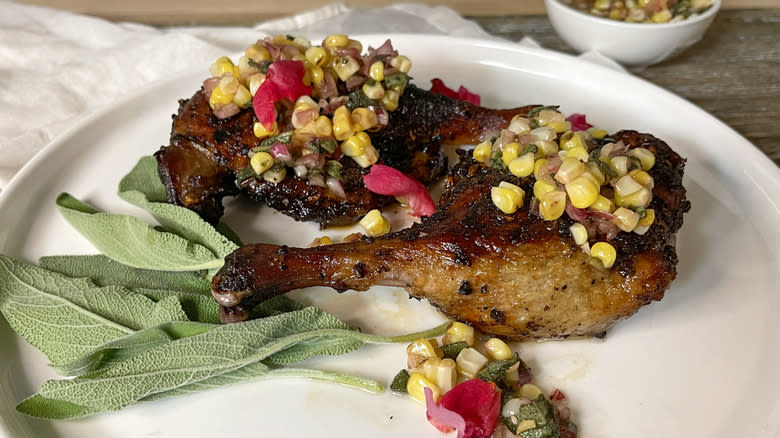
Prep Time: 1h 30mCook Time: 2h 15mYield: 2 servingsIngredients
2 duck thighs, fat trimmed
2 tablespoons juniper berries
¾ + ¼ teaspoon kosher salt, divided
1 tablespoon dark brown sugar
1 ear of corn
½ small red onion, finely chopped
3 tablespoons sunflower oil
1 ½ tablespoons sherry vinegar
1 tablespoon honey
2 tablespoons chopped fresh sage, plus more sprigs for garnish
⅔ cup duck fat
Directions
Pat the duck dry with a paper towel and score the skin side of the thighs with a knife or toothpick. Set aside.
Toast the juniper berries in a pan over medium-high heat for a few minutes, until shiny and fragrant.
Using a mortar and pestle, crush together juniper berries, ¾ teaspoon kosher salt, and dark brown sugar.
Pat the duck thighs dry with a paper towel, then coat them evenly with the juniper berry mixture. Set aside for 30 minutes to allow the flavors to infuse.
In a hot skillet, sear corn on all sides, then remove the kernels.
Combine the onion, corn, ¼ teaspoon kosher salt, sunflower oil, sherry vinegar, honey, and chopped sage. Set aside.
Preheat the oven to 275 F.
Add the duck legs skin-side down to a cold cast iron skillet and bring it up to medium heat.
Cook the duck thighs until the skin crisps and fat renders, about 15–20 minutes.
Add ⅔ cup additional duck fat to the skillet, or as much as is needed to bring it at least ¼ of the way up the legs. More fat will render as it cooks.
Turn the duck over and cook it in the oven for approximately 2 hours, or until the meat is tender. If the skin is browning too much, cover with a lid or foil.
Baste halfway through cooking.
Remove onto a plate or paper towels and allow the duck to rest for 15 minutes.
Serve the thighs while warm, drizzled with corn relish.
Read the original article on Tasting Table

 Yahoo News
Yahoo News 
